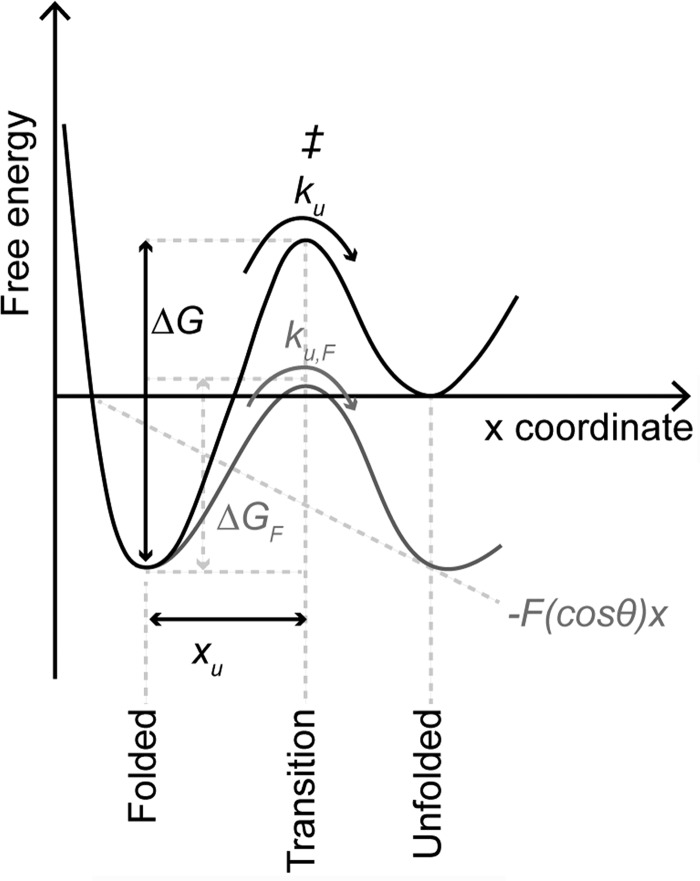FIGURE 5.
Schematic of an unfolding energy barrier for a stable structural segment. The folded state of a structural segment is separated from the unfolded state by a free energy barrier. In the absence of an externally applied force (i.e., at equilibrium), the folded structure can unfold at certain transition rate (ku) by overcoming the transition state (‡). xu characterizes the distance from the folded state to the transition state. The height of the unfolding free energy barrier separating the folded state from the unfolded state is given by ΔG. According to the Bell-Evans model (18, 19, 47), an externally applied force (F) tilts the energy landscape by the mechanical energy (−F(cosθ)x) and lowers the free energy barrier (ΔG) to ΔGF. Lowering of the free energy barrier is described by the pulling direction x and the angle θ of the externally applied force (F).

